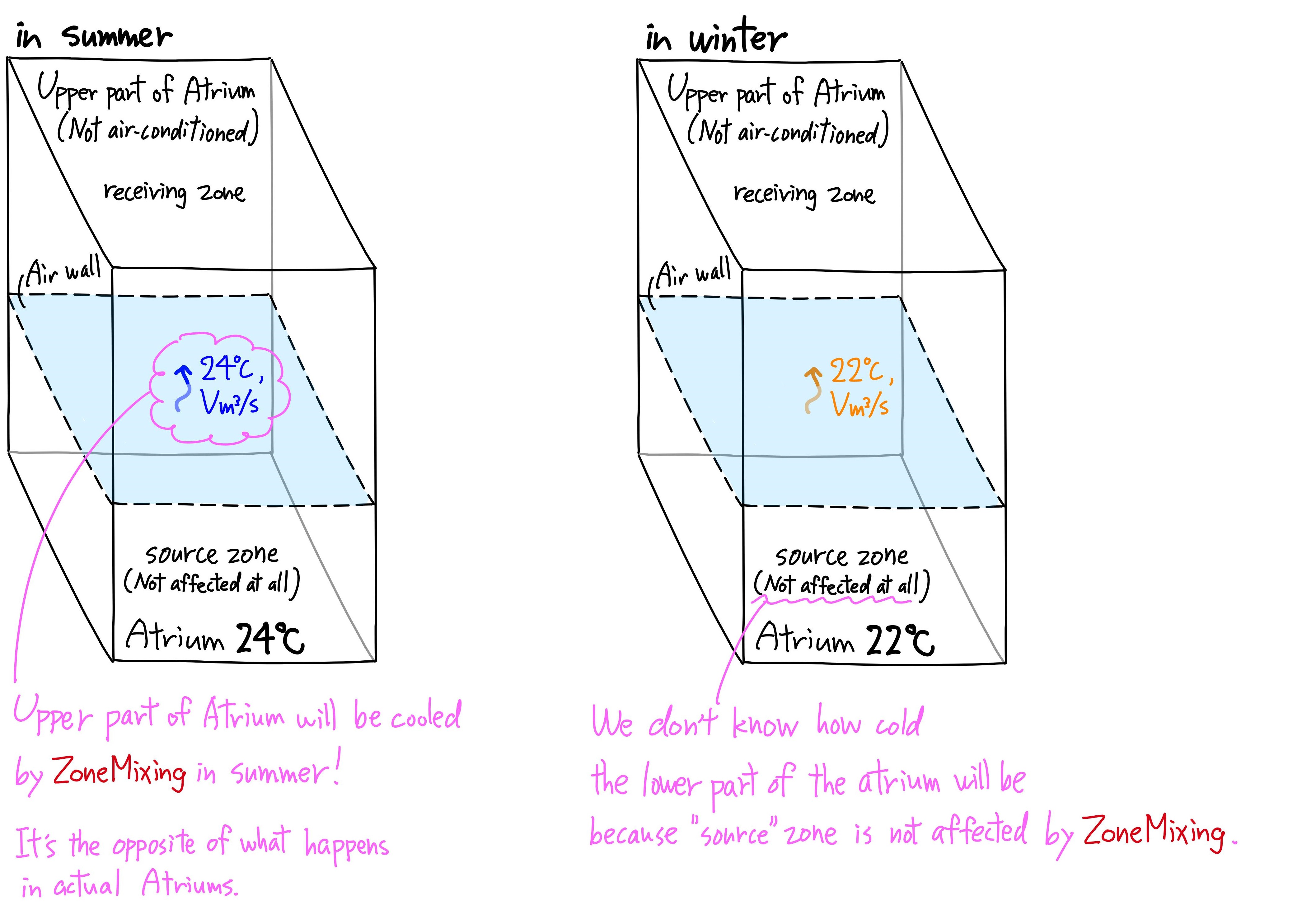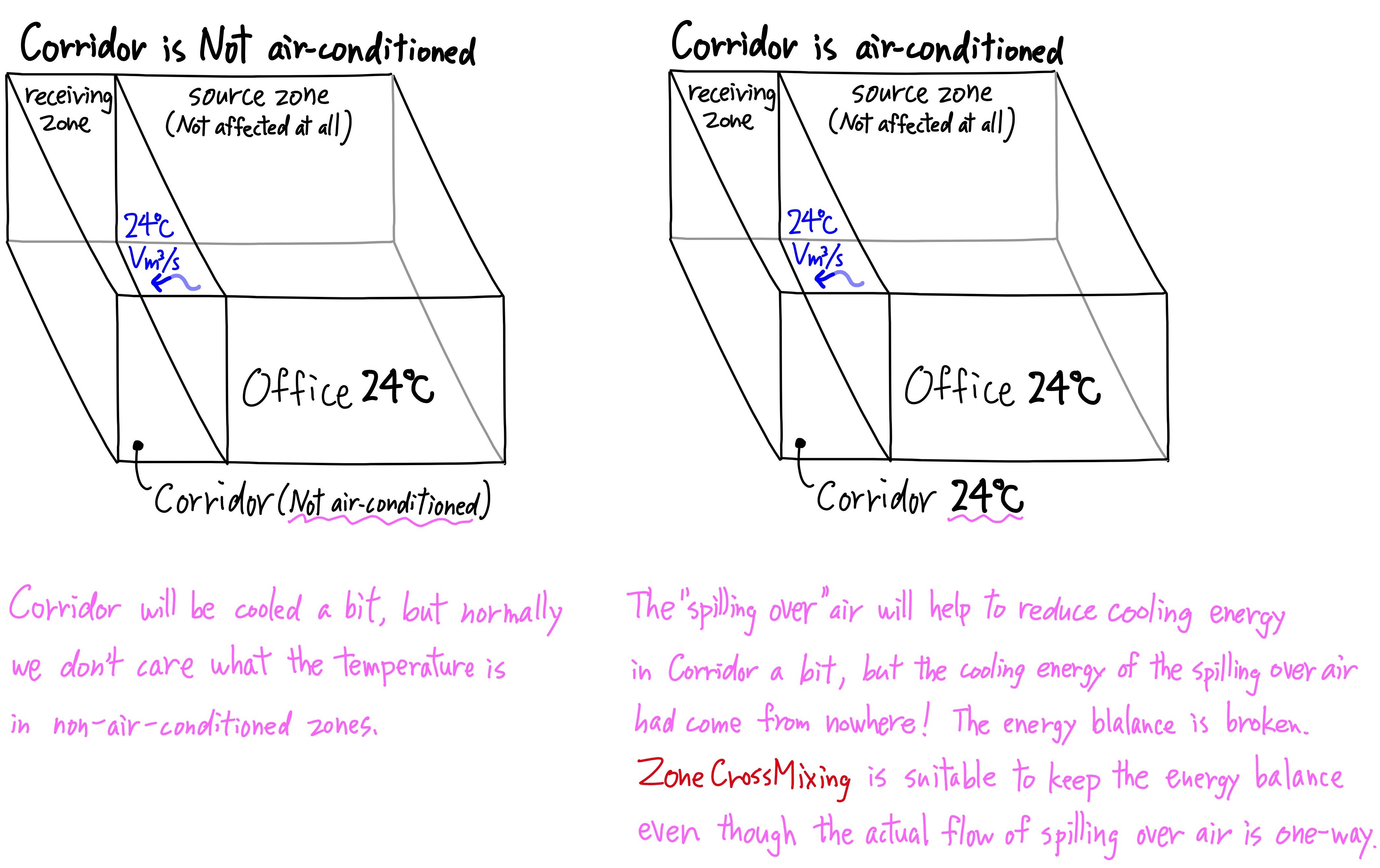I did case studies with a very simple model in order to check the function of ZoneMixing and ZoneCrossMixing.
Two zones (ZoneA and ZoneB) are adjacent to each other through an air wall. They have different cooling setpoint: 30°C for ZoneA and 24°C for ZoneB. Cooling system is HVACTemplate:Zone:IdealLoadAirSystem. I simulated 7 cases with different conditions. The table below summarises each condition and simulation result (annual cooling end use). "AtoB" means that ZoneA is the "source" zone and ZoneB is the "receiving" zone. The same Design Flow Rate was specified inZoneMixing and ZoneCrossMixing, and the schedule was always on.

Case2 and Case4 resulted in lower cooling end use than Case1(No mixing), which means that the cool air in ZoneB was distributed to ZoneA and helped to cool ZoneA, but no additional cooling energy was used in the HVAC system in ZoneB.
On the other hand, Case3 has mush higher cooling end use than Case1(No mixing), which means that the hot air in ZoneA was distributed to ZoneB and the HVAC system in ZoneB required much cooling energy.
These results are consistent with what is described in I/O Reference and EngineeringReference. i.e.,

But then, who would use ZoneMixing? It generates cool/hot air from nothing and completely destroys energy balance and energy simulation.
My case study model has an extreme temperature difference between two zones, but even if the temperature difference is very small, the difference causes inaccuracy of energy simulation.
ZoneCrossMixing makes sense. To me, ZoneMixing looks like a degraded version of ZoneCrossMixing. Is there a case where ZoneMixing would be more useful than ZoneCrossMixing?







